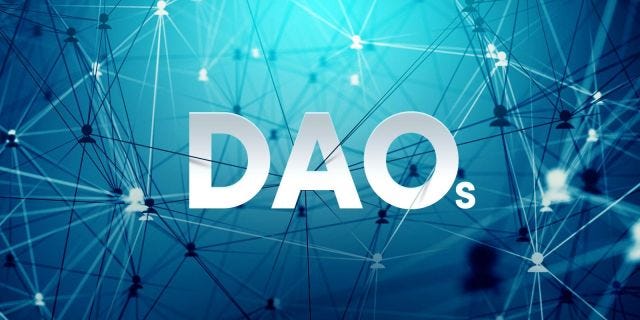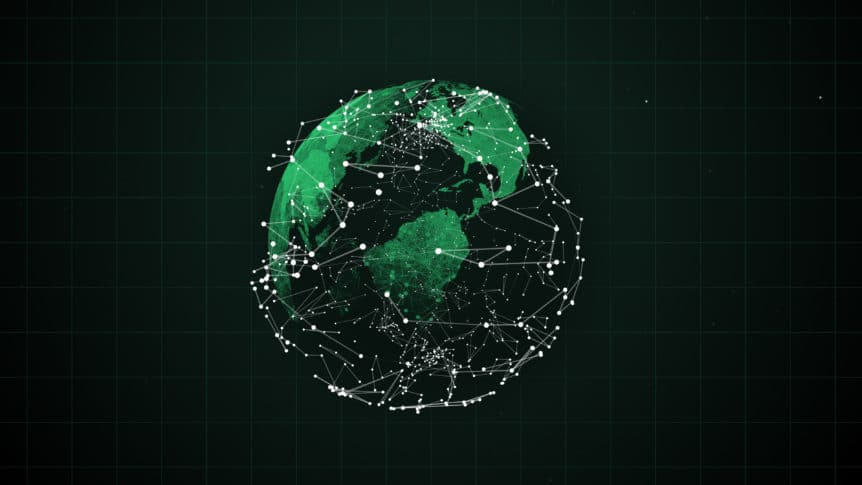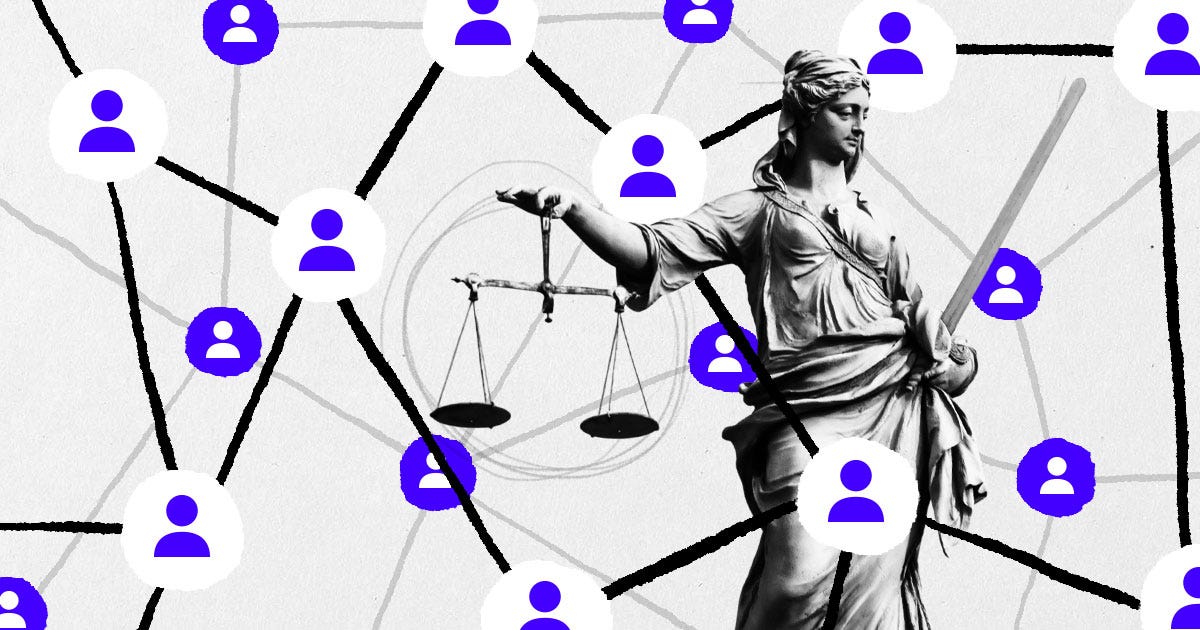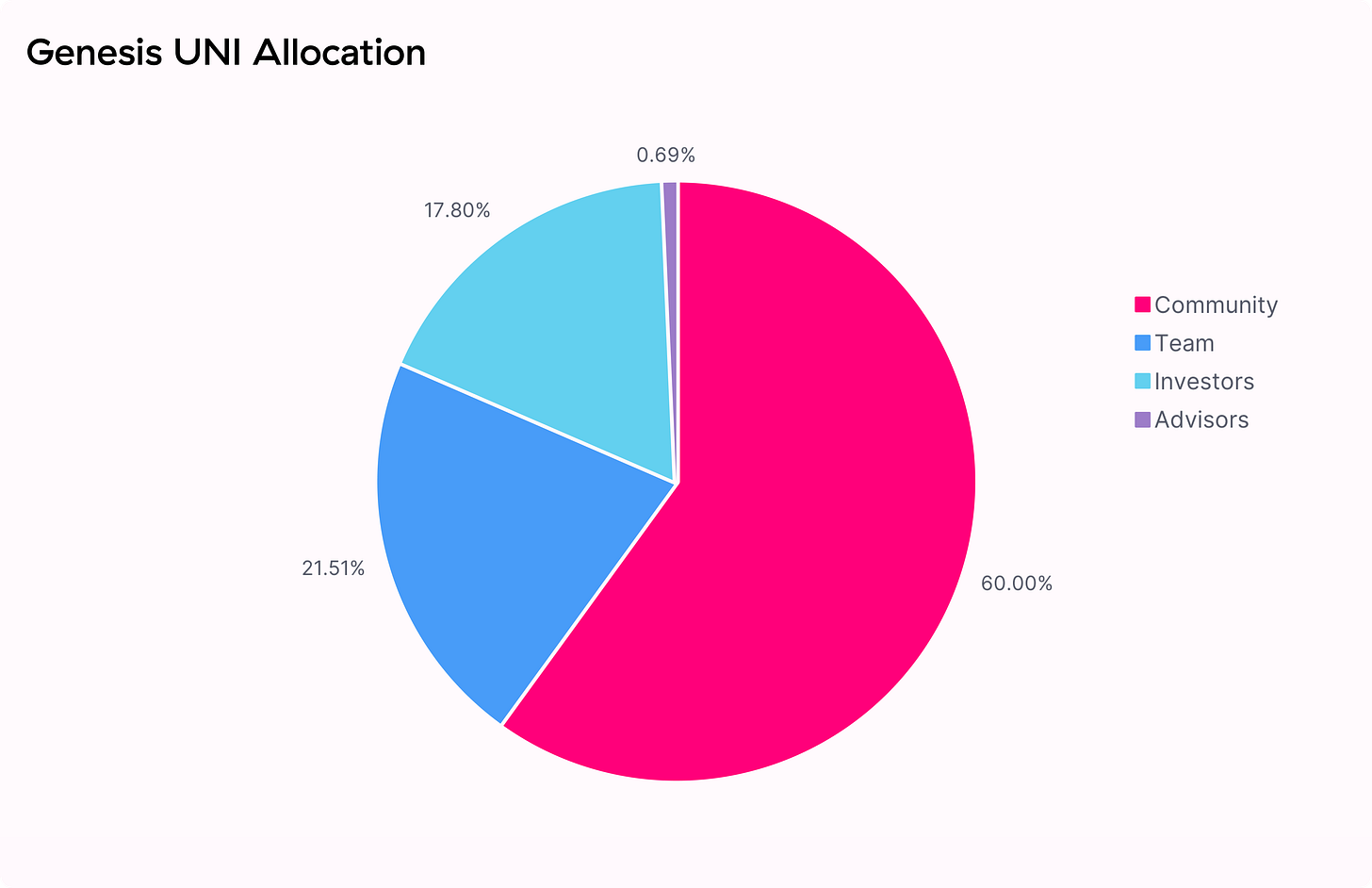How to DAO with People, not just Protocols
The concepts and tools to understand on how to build decentralized online communities and what it's all about
Decentralized Autonomous Organizations (DAO’s) are a foundational organizational method that is set up for massive growth in 2022, and are at a similar adoption stage to where Non-Fungible Tokens (NFTs) were just a year ago. Before they became the Collins Dictionary Word of the Year. In 2021 alone, DAO’s held over $16B USD in value at their peak in mid-September and have over 3 million people (Jan 2022) active in coordinating on similar missions across the world. Projections tell us adoption will only go up. A DAO is an entity with no central leadership, where decisions get made from online communities organized around a specific set of rules enforced on a blockchain. They are a mechanism focused on bringing people together like we have never seen before.
DAO’s give people the ability to organize online, come together from all backgrounds and make decisions that help us solve human collaboration across the world. It’s one of the most human inventions you can find on the internet. Some examples of DAO’s include:
KrauseHouse: Basketball fan owned community purchasing an NBA team
Molecule: Patients, researchers and investors decentralizing scientific research funding for causes they believe in
Seed Club: Decentralizing community ownership and organizing community DAO’s
PubDAO: Media and content creators decentralizing content distribution & rewards
CityDAO: Decentralized land and public good ownership
The LAO: Decentralizing funding and talent for Ethereum-based projects and protocols
The main premise of DAO’s are to allow individuals to work, invest and have a stake in communities and projects they may have always wanted to be a part of. Social media connected us all and made the web interactive. We formed groups, clubs, and created new fundraising options like GoFundMe and Kickstarter. This disrupted how organizations connected with their customers. DAOs are the next evolution of this, where the customer becomes the organization. Allowing community members to have a stake in the future success of the community.
Before DAO’s, online community members weren’t able to work directly together without a third party application or service charging a fee to users. Everyday people may not have contributed to working in these ways due to the bar being set too high to invest, less incentives for work or their was no method to properly reimburse people to join online communities. Now DAO members can be a part owner, employee, brand ambassador, board member and much more at a lower cost and whenever they are free in these online forums.
The People Problem
One of the biggest challenges I hear from creators and organizers of DAO’s are how to establish a flat, decentralized organizational structure. To differ from how big tech and software teams are structured today from the C-suite down to the associates. The kind of self-direction that comes with minimal hierarchy, speed, and empowerment, but also enables team members to be held accountable for project milestones, getting things done and still have a distinct clarity of scope.
Some questions that often come up are; if we are all decentralized members in DAO, do we need a face for our organization? How do we properly delegate funds to the community? How do we make sure we aren’t creating a Ponzi scheme? How do you keep members interested but not burnout?
Below are some examples and frameworks for how to organize teams looking to create DAO’s as well as some frameworks to help organize how you build many DAO’s in flat, decentralized and mutually beneficial ways.
Organizational Design
Decentralized governance and decision making within DAOs are highly crucial, but differ when interacting with people specifically.
When humans are involved: distribution of power > pure decentralization.
In blockchain protocols, all nodes are doing the same set of tasks. Every node is equally qualified to do the work and no node is more valuable than the others ensuring computational trust. Maximizing decentralization makes sense here because machines do what they are programmed to do. Unless trained to do so, computers have no emotional or cognitive response to data or information that comes in and out of their network. They can operate with as many users as possible and not grow any biases or favorable ways to do things.
But in human-to-human interaction and systems (like DAOs), there is a much larger range of tasks and skillsets that are offered and need to be accomplished on a team. Tasks like marketing, software development, product, community all come with people who have different skills, experiences, and expertise to each task or task group assigned to their roles. Within these roles, comes domain specialization.
Software developers are great at coding but they might not be as strong in marketing. Not everyone is equally qualified to make certain decisions or do specific types of work and this is especially true in DAO’s.
The better approach in organizing people is to distribute power in a decentralized manner. Giving people with domain expertise the power to make decisions and execute in their domain field. Doing that in a decentralized way means giving Core Team Members a voice in deciding who is an expert to make the decisions wisely in their area of expertise.
Vote for Who, not What
The aim here is not to repeat representative democracy where people make decisions across a wide range of topics like we see today in western politics. This is intentionally recognizing that some people have expert knowledge in a specific domain and we the people in the DAO trust that they will make the right call when given the chance to.
Instead of DAO members voting on the WHAT, the DAO votes on the WHO. At first glance, this may seem like a centralization of power. However this is not the case as the DAO is organized to have the ability to remove power from certain people over a certain span of time and/or if Objectives & Key Results (OKR’s) and Key Performance Indicators (KPI’s) led by that member are not met. A DAO can then simply distribute Core Team ownership elsewhere.
This organization of power helps solve major challenges DAO’s face:
Not every token holder or voting member is an expert in their chosen domain space
Voters eventually gain or lose apathy towards decision making
Decision fatigue increases if you have to vote on everything within a group
How to Succeed Using a DAO
DAO’s usually succeed when you are trying to maximize community value in one of these two ways:
Masses of everyday people have an advantage over a few domain experts
Collective buying, valuing data, determining reputation or social costs are the most optimal solution
DAO Governance Goals:
What are the KPIs/metrics and OKRs of the DAO?
Which proposals should be funded?
Each DAO should be originally organized with members in a specific domain category or multiple categories of expertise in two-pizza teams (2-4 people initially). A person owning Product, Sales, Legal, Community, etc.
Each DAO and domain will take care of their own internal governance, compensation, and allocation of responsibilities.
Selecting a Core Team Lead
You most want to look for someone who Kevin Owocki of Gitcoin calls a Value Router. A person/DAO native to the *internet of value* that routes value to everyone around them; lifting all boats.
This person meets the maxims and criteria of building everyone else up, including themselves. Not only the community manager who is active on Discord channels, but is willing to take the time 1v1 with each member of the team when they are needed.
Keeping Core Team Member Sanity:
Limiting Core Team Member hours to 40 hours of pure domain contribution/week to prevent burnout
Encourage either 4 day work weeks or 1 month/year sabbaticals for Core Team Members to refuel
Allow community members and non-Core Team members to help contribute to work when you are on break or help you in the development process (pay community with DAO tokens or with products or services that benefit them)
Governance Participation Assessments:
To keep the DAO honest, it is important to look back in a retrospective way to make sure everyone is on the same page with what resources within the DAO are working on and what missions the team is aligning to. Held every three months (January, April, June, November), review these questions and criteria to see if you meet the groups standards:
Should the DAO’s key outcomes and KPIs change?
Have the DAO’s funding proposals created satisfactory progress towards the key objectives (identifying what works and what doesn’t)?
Identifying key organizational needs and bottlenecks to be addressed (these would need to pose a barrier to the DAO in achieving its key KPIs)
Pivoting, iterating, improving, and creating new work proposals
During these two weeks, everyone in the DAO is expected to participate in shared discussions. If a team’s work is found to be ineffective or needs improvement, they either can quickly iterate their plans or are given a notice period for which they may continue on for another 3 months but need to iterate on their work plan.
Scaling DAO’s
When a DAO looks to scale and accelerate their work, it does so via an open call for SubDAOs to apply for work as opposed to encouraging more member growth under functional working groups.
Focusing on accelerating the progress of the DAO, you can have the goal to grow horizontally via more SubDAOs (vs. growing vertically through domains or working groups). This enables more specialty to be spread and adopted to solve problems with the right people more effectively.
Through more SubDAOs and domain experts, the entire org can increase the number of teams trying new approaches to solving and innovating on existing problems and focuses while maintaining the same level of meta-organizational admin/overhead required to run.
Encourage new community members to join existing SubDAOs or start new ones.
SubDAO’s
SubDAO’s can be created to bring together domain experts to work on best practices and create many DAO’s to solve multiple problems. To start a SubDAO, the original DAO community must approve the SubDAO proposal.
SubDAO Proposal Criteria:
Key Performance Indicators (KPI’s) that the SubDAO/domain will focus on driving success in
Actual work that the SubDAO will undertake to drive toward the KPI (sprint/monthly)
Compensation and resources requested by the SubDAO/domain
The DAO engages in a two week intensive period of Governance Participation Assessments revolving around optimizing or taking away resources or missions from the group
Principles of SubDAO’s:
If a work proposal has a decent chance of driving forward KPIs, approve it
Loosely fund and operate as many ideas that may have a chance of working, allocate more resources to SubDAOs that produce results, de-fund ones that don’t
Encourage competition of ideas in driving KPIs (being open to two SubDAOs in running similar work eg. two teams working on two different go to market plans)
Once proposals are funded, let the proposers/SubDAO figure out the rest
Protocol Governance:
A protocol may need its parameters to be tweaked, smart contracts upgraded, etc. This is where software developer, community and legal domain experts come into assist if proposals and DAO Core Team members still believe the SubDAO is valuable.
Understand Protocol (mechanistic) vs DAO (humanistic) distinctions. In DAO’s we want explicit coordination among "nodes" because that's where the value emerges from. It’s really hard to have high quality social interaction in a highly decentralized setting
Core Team, SubDAO Dynamics & Allocation
Parent DAO should own 15% of total profit from themselves and 3-5% from SubDAOs, tokens, investment revenue and recurring revenue.
Parent DAO Financial Allocation:
15% Core Team Support
5% (maybe more initially) go to back-office functions
80% of total profit goes to DAO token holders
Many back-office functions do not drive immediate profits, but are crucial to the success of a DAO. Similarly, time-constrained projects (like NFT drops) and one-off bounties (IRL events) are best left to exist as a core component of the wider DAO.
SubDAOs (Hub and Spoke): a Parent DAO with their own token ($ABC), creates a new SubDAO token ($XYZ) to represent ownership in this new community.
Parent DAO owns 3-5% that each SubDAO brings in, governed by the Community Treasury
Attract new members to scale
Customers: traders, attendees, product users, investors, fans, creators, distributors, curators
Maximize value for the community treasury - SubDAO tokens increase the NAV (net asset value) of the treasury
Ensure community governance plays a meaningful role
Create a market for underlying tokens - SubDAO tokens create additional demand for DAO tokens to get exposure to all SubDAOs
SubDAO Decision Matrix:
Core Team - Are there full-time contributors to this working group?
Profit - Is this working group generating consistent revenue?
Novelty - Is this working group uniquely distinct from the Parent DAO?
Sustainability - Can this working group survive on its own?
If you vote ‘yes’ for all four, you move into creating a SubDAO
Steps to SubDAO Creation:
Create - Team Leads apply or are recruited to lead a SubDAO. Community votes on Team Lead and draft a proposal for the creation of a working group
Once a SubDAO raises Core SubDAO Team Salary / Cost of Operations, SubDAO can add full-time members with the Team Lead to create a new SubDAO
Fund - Work with the Team Lead to request funding in USDC and native tokens (typically a 50/50 split) from the DAO
DAO-SubDAO Token Distribution
IP-NFTs: Democratized and owned by all DAO community members through fractionalization and group bidding
Treasury Diversification Proposal: Community approved allocation of tokens rather than core Molecule team deciding where a percentage of $ABC tokens go towards
SubDAO Tokens: proves their value by generating revenue for the SubDAO with the community members the Team Lead lets in
Mint the new SubDAO token. Send a percentage (3-5% yearly) of the total supply directly to the DAO - subject to a cliff and vesting period. Distribute the rest of the SubDAO tokens to contributors and a new SubDAO community treasury
Upon the distribution of the new token, revenue should be split between the DAO treasury and the new SubDAO treasury.
Once initial SubDAO target revenues are met, 15% of revenue goes to SubDAO Core Team, the rest of the revenue should flow to the SubDAO treasury
The SubDAO can then choose to execute buy-backs, either on its native token or on the DAO parent token itself - benefitting both in the process.
At this point, the DAO now has ownership in the SubDAO, and the SubDAO now has its own form of ownership and upside to better incentivize full-time contributions to the group.
As the SubDAO grows, both parties win. In the event that SubDAO fails, liability is limited to the working group and its members, rather than the entire DAO itself.
DAO Tools
Communication
Token Accessed Chat - Collabland, Rabbithole, Guild
Governance
Proposals and Voting - Snapshot, Coordinape, Commonwealth, Discourse, Tally
Treasury Management - Gnosis Safe, Parcel, SourceCred, Syndicate
For more DAO tools, Coopahtroopa made an incredible list for you to review.
Conclusion
In my opinion, DAO’s will be a new method of online governance and communication. Enabling a new economy and utility of workers coming together to work on the niche and beneficial projects they have always wanted to. We are still in the early days here. Many more tools, protocols, systems and shortcuts will be made to make on-boarding and coordination of DAO’s simpler as time goes on.
Take advantage while the market is ripe now. Join a DAO, get on their Discord, contribute to their project wherever your talent shines and join the new community powered by Web3.
Special thanks to Margaretta Colangelo, Ray Dogum, Mike Pica, Jason Shah, Hirkirit Videe for helping review and organize my thoughts on this piece. And Paul Kohlhaas for helping frame the main objective on the piece for me.
References for my writing:
Patrick Rivera: A Guide to Crypto Tokens
Gitcoin: DAO’s - The New Coordination Frontier
Kevin Owoki: Know Thy Enemy - Coordination Failures
Vitalik Buterin: DAOs, DACs, DAs and More: An Incomplete Terminology Guide
Coopatroopah: How to SubDAO
Pet3pan: KPI-SubDAO Structure
Packy McCormick: The DAO of DAOs








